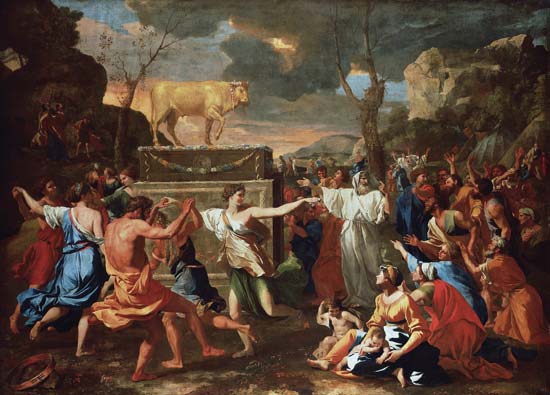ASHERAH WORSHIP IN ANCIENT ISRAEL Discovered

Critics say the Bible is not as ancient as it claims to be, and is often not historically accurate. God’s chosen people were warned against the worship of the pagan fertility false goddess Asherah prior to entering the promised land. “You do not plant an Asherah of any trees for yourself near the altar of your God YHWH, which you make for yourself” (Deuteronomy 16:21 LSV). Archaeological evidence discovered in ancient Israel provides ample evidence confirming such Asherah worship.
“Break down their altars, smash their sacred stones and cut down their Asherah poles”—Exodus 34:13 NIV
Despite the clear warning against Asherah worship, many Israelites adopted Asherah and El, or Baal, (her supposed male consort) worship anyway. Frequently wooden cult objects representing Asherah were erected in what were considered to be sacred places.
“Tear down your father’s altar to Baal and cut down the Asherah pole beside it . . . Using the wood of the Asherah pole that you cut down, offer the second bull as a burnt offering”—Judges 6:25,28 NIV
Gideon is described above as destroying such a cult object. So did Asa, Hezekiah and Josiah, as described below.
“Hezekiah . . . removed the high places, smashed the sacred stones and cut down the Asherah poles”—2 Kings 18:1,4 NIV
“King Asa also deposed his grandmother Maaka from her position as queen mother, because she had made a repulsive image for the worship of Asherah. Asa cut it down, broke it up and and burned it in the Kidron Valley”—2 Chronicles 15:16 NIV
“The Israelites who were there went out to the towns of Judah, smashed the sacred stones and cut down the Asherah poles”—2 Chronicles 31:1 NIV
“He began to purge Judah and Jerusalem of high places, Asherah poles and idols. Under his direction the altars of the Baal’s were torn down; he cut to pieces the incense altars that were above them, and smashed the Ashram poles and the idols. These he broke to pieces and scattered over the graves of those who had sacrificed to them”—2 Chronicles 34:4,5 NIV
As we can see from the accurate historical record in the Bible, some very zealous Israelite leaders obeyed God’s direction to eliminate Ashram worship, not only from the left over Caananites, but also from God’s own people, who knew better. They nominally worshipped Yahweh, while mixing in the worship of various pagan gods and goddesses, which is a form of religious syncretism (simultaneous worship of various gods). This morphed into some assuming, at least by their actions, that Asherah was also Yahweh’s partner as well.
An inscription from Kirbet el-Qom, approximately 8 miles west of Hebron, was discovered, dating to the late 8th century BCE (at least 100 years after Asa). It gives us evidence of why it was still necessary for Hezekiah and Josiah to continue to demolish Asherah poles even after the religious reforms of Asa. This inscription originally appeared on a pillar of the burial chamber of a man named Uriyahu. His eulogy on this inscription claims that Yahweh had blessed him and delivered him from his enemies “by his Asherah”. Of course, the claim is not true, no matter how much Uriyahu and his loved ones may have believed it.
Similar inscriptions from Kuntillet Ajrud, 31 miles south of Kadesh Barnea, in the northern Sinai suggest that many Israelites continued their devotion to the false goddess Asherah , worshipping her as Yahweh’s spouse. This is the religious syncretism and idolatry that King Asa attacked, as described in 2 Chronicles 15.
“Even their children remember their altars and Asherah poles beside the spreading trees and on the high hills”—Jeremiah 17:2 NIV
The Hebrew word “Asherim” (“Asherah poles”, NIV) in Jeremiah 17:2 denoted either the Canaanite goddess named Asherah (the singular form of the word) or some object associated with pagan worship in Israel and Judah. Of the 40 occurrences of this term in the Hebrew-Aramaic scriptures, only four of them refer to the proper name of the goddess. The rest indicate something either constructed of wood or planted. We can safely assume that a wooden object, perhaps a pole, or a tree, was used to symbolize the goddess in Canaanite religion.
“They aroused the LORD’S [Yahweh’s] anger by making Asherah poles”—1 Kings 14:15 NIV
The scriptures that speak of Asherim being ‘made’ may refer to figurines of the goddess.
The Canaanite goddess Asherah is well attested in the texts from the ancient city of Ugarit, where she is portrayed as the consort, or partner, of El and the mother of other gods. Jeremiah’s condemnation of idolatry in Judah, especially of the type associated with the Asherim is illuminated by the cache of inscriptions found at the Kuntillet Ajrud site. Especially enlightening are three texts that say:
“I bless you by Yahweh of Samaria and by his Asherah.”
“I bless you by Yahweh of Teman and by his Asherah.”
“To Yahweh of Teman and by his Asherah.”
The Asherah cited at Kuntillet Ajrud may be the same wooden object so frequently mentioned in the Bible. However, it’s more likely that the use of the term in these inscriptions provides firsthand evidence idolatrous syncretistic devotion to Yahweh and a pagan goddess, who is his imagined consort, in this blend of paganism with the worship of Yahweh. In any case, this is the type of idolatry that the prophet Jeremiah was inspired by God to combat (2 Timothy 3:16).
Thus, this evidence of Asherah worship in ancient Israel is just more documented evidence of the Bible’s Authenticity.